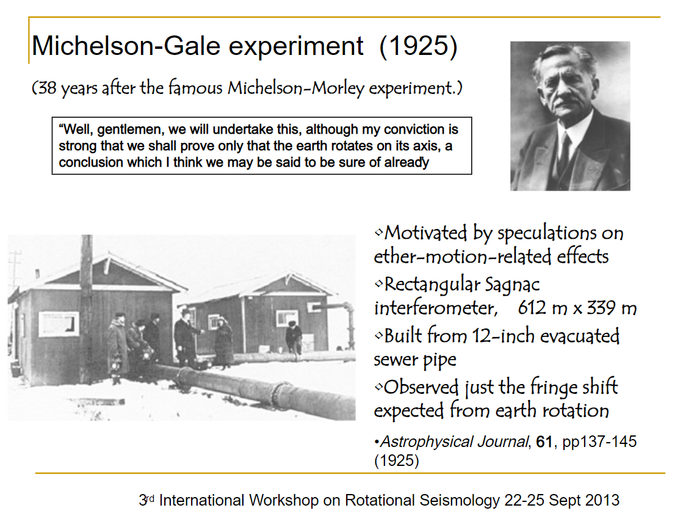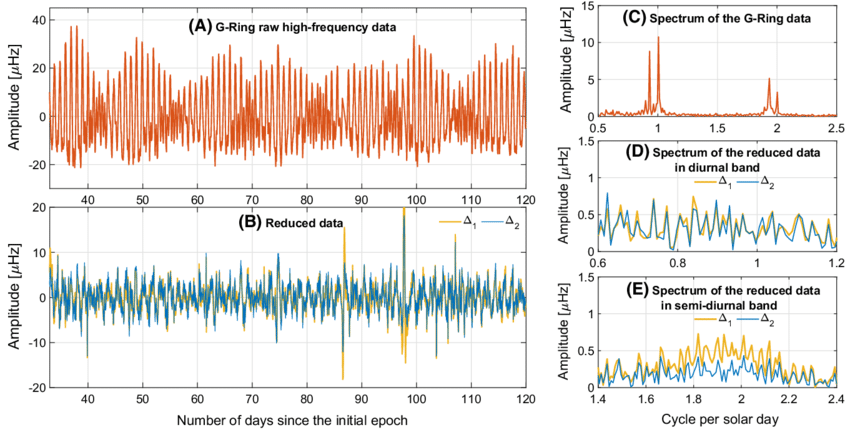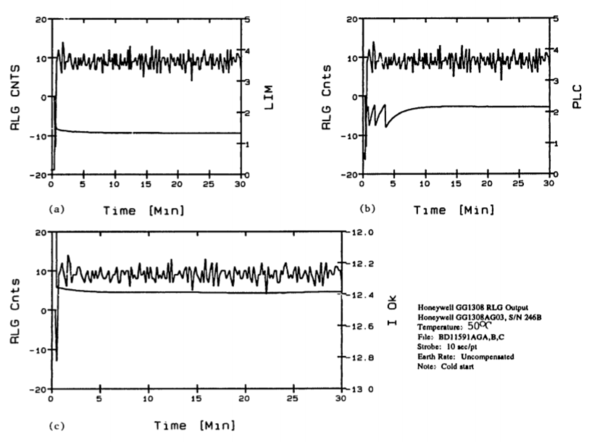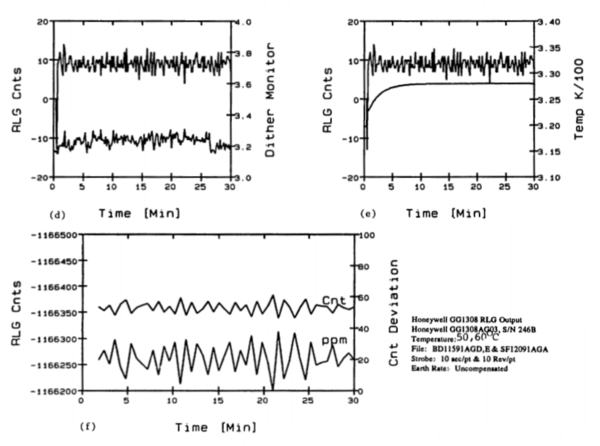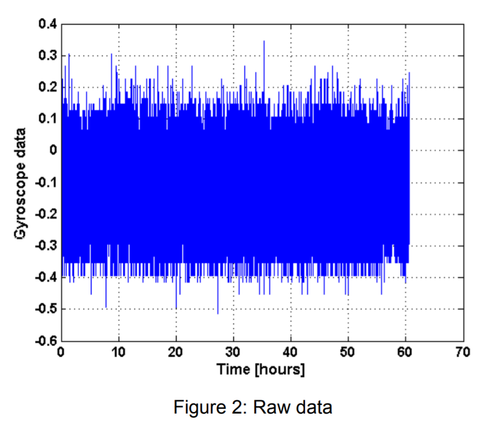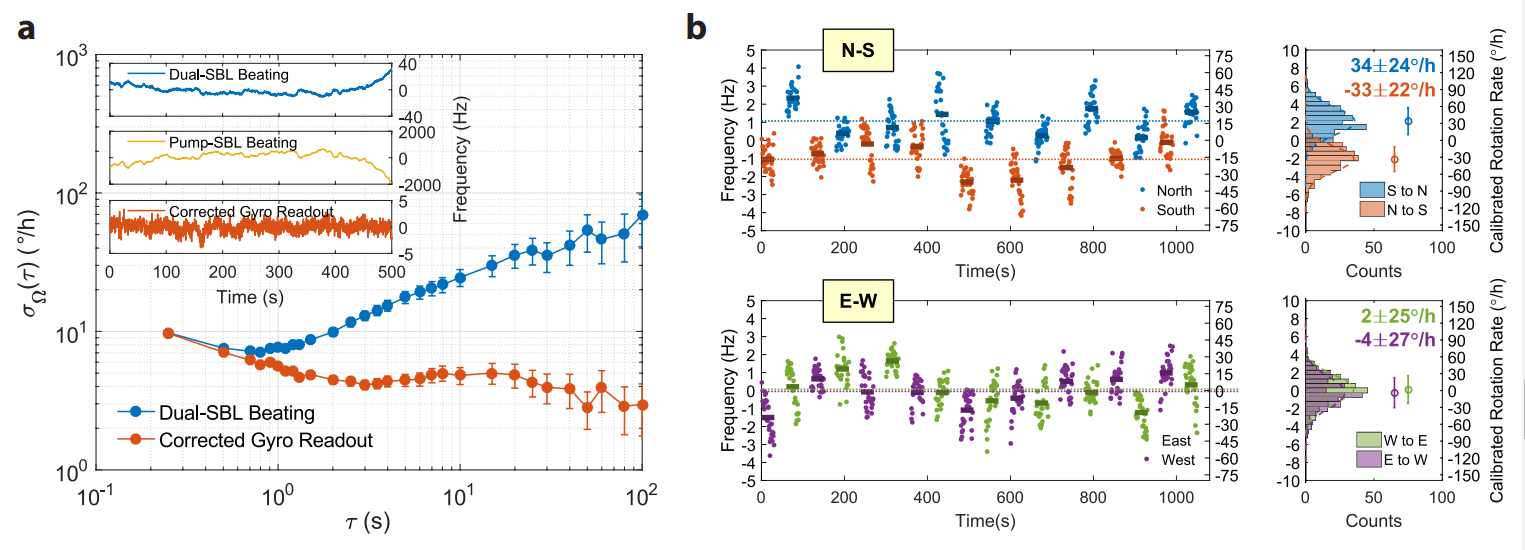Ring Laser Gyroscope
The Ring Laser Gyroscope (RLG) is a consumer device version of the Michelson-Gale-Pearson Experiment (MGP)[1]. The principle of operation of these devices is based on the Sagnac Effect, which was famed for showing that light changes velocity on a rotating platform. In the RLG and MGP experiment the Earth is used as the 'rotating platform'. Like with the Michelson-Gale-Pearson Experiment, some have alleged that Ring Laser Gyroscopes have detected the rotation of the earth.
From a work titled The Sagnac and Michelson-Gale-Pearson Experiments (Archive) by Dr. Paulo N. Correa we read on p.5:
- “ The outcome of the MGP experiment was ambiguous, though maybe no more ambiguous than the small persistent positive shift observed in MM experiments. Composed of 269 separate tests with readings that varied from -0.04 to +0.55 of a fringe, and a mean at +0.26 fringes, the MGP experiment could be interpreted to yield a positive result of ≈ 0.3 km/s - therefore near the speed of the earth's rotation, but the result was of borderline significance. It could be said that the experiment was inconclusive because it adduced neither proof that there was a shift in the phase of the light beams, nor that there wasn't one. ”
Essentially the tests saw wild results. There was almost no change to light's velocity in one test, and then a lot of change in another test. It is perplexing that the rotation of the earth would start and stop when tested at different times. Only through the statistics was it claimed that the experiment saw the rotation of the earth. The inconsistent results were ambiguous in nature and could offer no evidence of the shift in the phase of the light beams. As stated above, the results of the Michelson-Gale-Pearson experiment were inconsistent and an algorithm was applied to get the desired result. If we are to say that the Ring Laser Gyroscope is the same device, then the same criticism would apply.
It is further seen that, like the original MGP experiment, the raw results of the gyroscopes are inconsistent[2] and dwarf the results from rotation. The device is affected by effects which are not the rotation of the Earth. If there are effects from unknown sources in the experiment and the desired effect must be pulled out with statistics, then one may suggest that it is not possible to indicate which effect comes from what phenomena. It could be an oscillation from another diurnal phenomena which is affecting the device.
Additionally, the Mechanical Gyroscope offers a proof by contradiction. The rotation of the Earth is unable to be detected, despite the device detecting an artificial situation when it is placed on a rotating platform with a period of 24 hours.
Ring Interferometer
Micheson-Gale was a ring interferometer and the basis for all ring interferometers to come after this experiment. Its Wikipedia article says:
“ The Michelson-Gale experiment was a very large ring interferometer, (a perimeter of 1.9 kilometer) ”
The second slide in a presentation titled "Ring Laser Gyroscope Measurement of Absolute Earth Rotation" introduces the Michelson-Gale experiment as basis for the Ring Laser Gyroscope:
Ring Laser Gyroscope Measurement of Absolute Earth Rotation
3rd International Workshop on Rotational Seismology
https://slideplayer.com/slide/10532529/ (Archive .ppt)
Further Reference
- Ring Lasers - a brief history (Archive) - Describes that the Ring Laser Gyroscope is a Sagnac/MGP device.
Raw Data
In On the Influence of Diurnal and Subdiurnal Signals in the Normal Vector on Large Ring Laser Gyroscope Observations look at the Raw Data in figure A:
“ Sagnac frequency sensed by the G-ring: raw data (a) and after removal of tiltmeter observations (b, yellow line) and modeled effects (b, blue line); Also, the diurnal polar motion model (Brzezin´skiBrzezin´ski 1986) was subtracted from both time series; amplitude spectrum of the raw G-ring observations (c); amplitude spectra of the reduced data in diurnal and semi-diurnal band, respectively (d, e). In plots d, e yellow and blue lines refer to the respective signals in plot b ”
Honeywell Ring Laser Gyro
From a paper titled Performance Evaluation of the Honeywell GG1308 Miniature Ring Laser Gyroscope (Archive) we find raw data (RLG Cnts) which includes the Earth rate:
2.3 GRAPHICAL REPRESENTATION
“ Figure 2-2 shows graphical representations of typical raw gyro outputs. The family of graphs (a) thru (e) illustrate the RLG counts and analog parameters for a bias drift test that includes local Earth rate with strobing at a nominal 10 seconds. The initial part of the traces show the RLG turn-on transient with a RLG Count settling time of approximately one minute. One should note that it takes more than five minutes for the temperature and the PLC controller to settle. Three PLC shifts occur during this turn-on temperature transient. Even though the RLG fixture is temperature controlled to better than 0.1 0C it is shown in Fig. 2-2e that after turn-on the internal temperature of the RLG rises by 4 to 4.5 0 C before settling out. ”
MEMS Gyroscope
Similarly, raw data from Section 4.1 of a paper titled Measuring the Earth’s Rotation Rate Using a Low-Cost MEMS Gyroscope (Archive), which uses another kind of gyroscope to detect the Earth's rotation, shows that the raw data is inconsistent and noisy. The Earth's rotation is pulled out of noise.
“ During the measurements the gyroscope was stationary on the floor. Its positive sensitive axis was parallel to the local horizontal plane. Total data collection time of the experiment spans to approximately 61 hours. The raw data collected directly from the sensor is shown in Figure 2 as a function of time. ”
If one were to directly conclude that the movement is due to the rotation of the earth, one would also have to conclude that much of the data involves the earth 'spinning' backwards from its supposed direction. In truth, the noise seen is caused by other effects which are not the earth's rotation, subverting the results. Only through noise analysis is the the Earth's rotation interpreted and pulled out with an algorithm. It is through the interpretation of noise that the Earth's rotation is found.
Microresonator Brillouin Laser Gyroscope
Another type of gyroscope which claims to detect the Earth's rotation, with increased precision over MEMS gyroscopes, is the Microresinator Brillouin Laser Gyroscope. Assessing the inset graphic of the raw data in (a) and the North-South and East-West variations in (b) appears as if this device is also pulling data out of noise:
Microresonator Brillouin Laser Gyroscope with Earth-Rotation-Rate Sensitivity (Archive)
“ Optical gyroscopes are widely used for precision navigation and there has been growing interest in the possibility of integrated optical gyroscopes. In this talk, we report a chipbased Brillouin laser gyroscope with Earth-rotation-rate sensitivity.
...The enhanced performance is orders of magnitude better than that of micro-electro-mechanical-systems (MEMS) rotation sensors which are widely used in consumer electronics. ”
Caption:
“ {{{1}}} ”
According to this caption when switching the East-West axis to North-South it creates a phenomenon where twice the rate of the Earth's rotation rate is detected (2×15◦/h). Consider if the Earth should ever be detected to be spinning twice as fast in any orientation.
Addendum
According to the RE interpretation the earth is rotating and giving consistent results. There are other secondary mechanisms modifying and dominating those results. Due to the range seen, these secondary mechanisms are also somehow related to the speed of the Earth's rotation. It is from these mysterious mechanisms that the rotation of the earth is indirectly pulled out of the noise with an algorithm.
Alternatively, we may interpret this as one mechanism which is creating that range of results, and which is related to the diurnal period of the sun, tides, or celestial bodies which move over the earth. Should it be unreasonable that a very sensitive device can detect a background oscillation of the world in the noise it detects? Whether the responsible mechanism is seismic, pressure, or 'aether' related, we know by the direct evidence of inconsistency that the results are modifiable by a mechanism present in the experiment which is not the rotation of the earth. If it is modifiable then it is also entirely createable.
We should ponder whether an inconsistent experiment has ever been a proof of anything in science. As the experiment is tainted by uncontrolled and unmitigated effects which affects the device, one can only conclude that it is unclear as to what is being measured, what effects are involved, and whether there is even a constant baseline beneath it all; negating any statistical conclusions and thus demonstrating that the device is not decisive evidence for the rotation of the Earth.
Next: RLG Seismology
While inconsistent experiments are typically invalid as demonstration of any particular cause, one potential contributor of the noise in these very sensitive devices is the seismic disturbance inherent in the background environment. Unlike earth rotation, seismic disturbance is not a constant phenomenon. This page continues onto: Ring Laser Gyroscope - Seismology
Related
- Mechanical Gyroscope - In contradiction, the mechanical gyroscopes does not show rotation to the earth
See Also
Flat Earth Topics on Rotation and Revolution
- Michelson-Morley Experiment - Light velocity experiment which suggests a lack of Earth's motion around the Sun
- Sagnac Experiment - Experiments which show that light's velocity is indeed affected by detector motion
- Airy's Failure - An experiment which suggests that the stars are in motion, rather than the Earth
- Time Dilation by Latitude - The predicted time dilation caused by Earth's rotation does not occur
- Aviation - Mechanical air flight assumes a flat, non-rotating Earth
Round Earth Topics on Rotation
- Foucault Pendulum - Pendulum device which is alleged to detect the rotation of Earth
- Coriolis Effect - Eastwards deflection of bodies caused by Earth's rotation
- Coriolis Effect (Weather) - Hurricanes and other effects due to Earth's rotation
- Ring Laser Gyroscope - Ring laser experiment alleged to observe the rotation of Earth
Related

